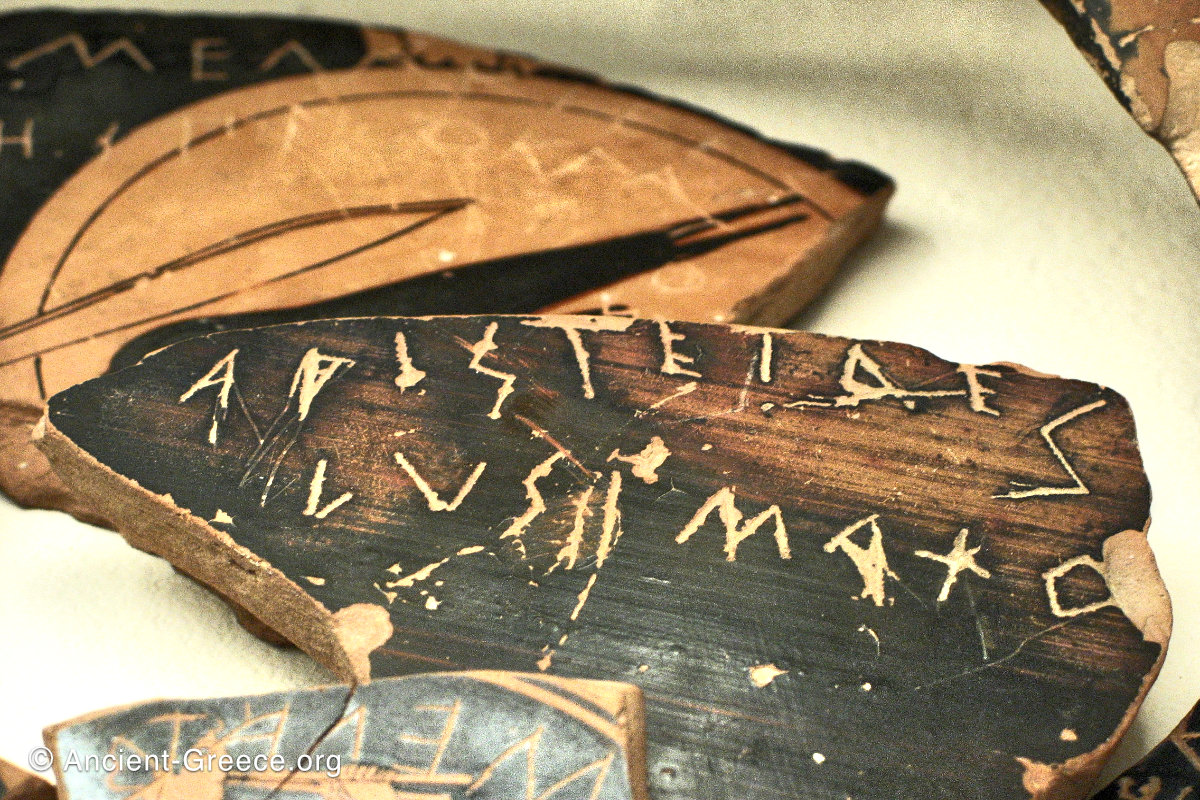
On this page:
The flurry of development and expansion of the Archaic Era was followed by the period of maturity we came to know as “Classical Greece”.
Recognized as the pinnacle of Ancient Greek civilization, the Classical Period is the most famous for spawning significant advancements in culture, politics, and scientific thought.
During the Classical era, Hellenic culture continued growing all along the northern Mediterranean and Black Sea through a robust commercial network, mostly centered around the expanded ancient sea lanes.
This cultural expansion was the result of commercial ties among city states and the people that surround them. It was not the result of the customary military conquests, though Greeks did not shy away from conflicts, most of which pinned one Greek polis against another until an external foe brought them together for brief periods of time.
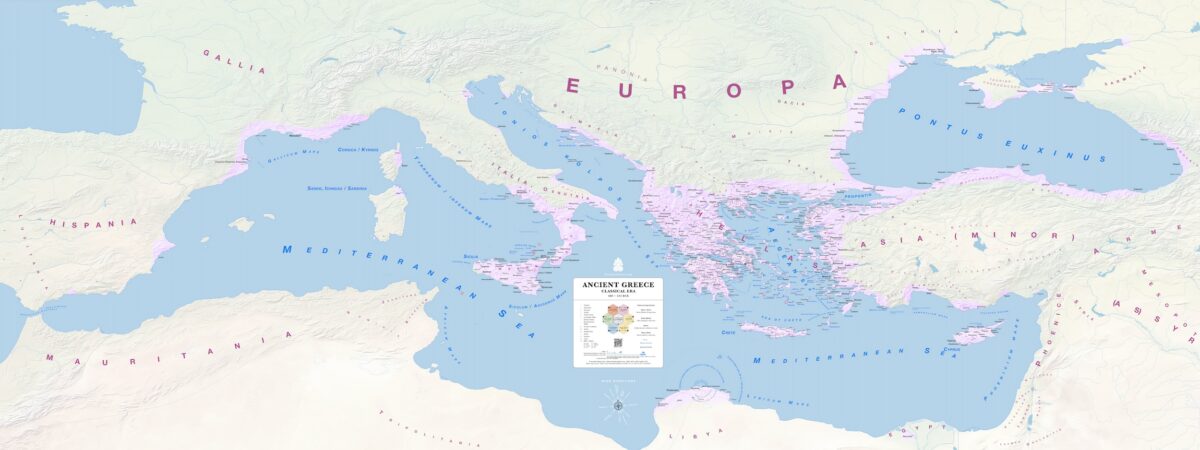
Athens and Sparta
Between 480 and until 323 BCE Athens and Sparta dominated the Hellenic world with their cultural and military achievements. These two cities, with the involvement of the other Hellenic states, rose to power through alliances, reforms, and a series of victories against the invading Persian armies.
They eventually resolved their rivalry in a long, and particularly nasty war that concluded with the demise of Athens first, Sparta second, and the emergence of Macedonia as the dominant power of Greece. Other city-states like Miletus, Thebes, Corinth, and Syracuse among many others played a major role in the cultural achievements of Classical Greece.
Early in the Classical era Athens and Sparta coexisted peacefully through their underlying suspicion of each other until the middle of the 5th c. BCE.
The political and cultural disposition of the two city-states occupied the opposite ends of the spectrum. Sparta was a closed society governed by an oligarchic government led by two kings, and occupying the rugged southern end of the Peloponnese, organized its affairs around a powerful military that protected the Spartan citizens from both external invasion and internal revolt of the helots.
Athens on the other hand grew to an adventurous, open society, governed by a democratic government that thrived through commercial activity.
The period of Perikles’ leadership in Athens is described as the “Golden Age”. It was during this period that the massive building project, that included the Acropolis, was undertaken.
The Persian Wars
The Athenian adventurous spirit, and their loyalty to their Ionian kin obliged them to assist the Greek colonies that were feuding with the powerful Persian Empire in Asia Minor. To aid the Ionian Revolt (499 BCE), led by Miletus, the Athenians landed a small garrison in Ionia to fight against the Persians and to spread the revolt.
The Greek forces enraged the Persians by burning the capital of Lydia, Sardis in 498 BCE, but they were eventually defeated in 494 BCE. The sacking of Sardis and the defiance of the Athenians invoked the wrath of the Persian king Darius who vowed revenge.
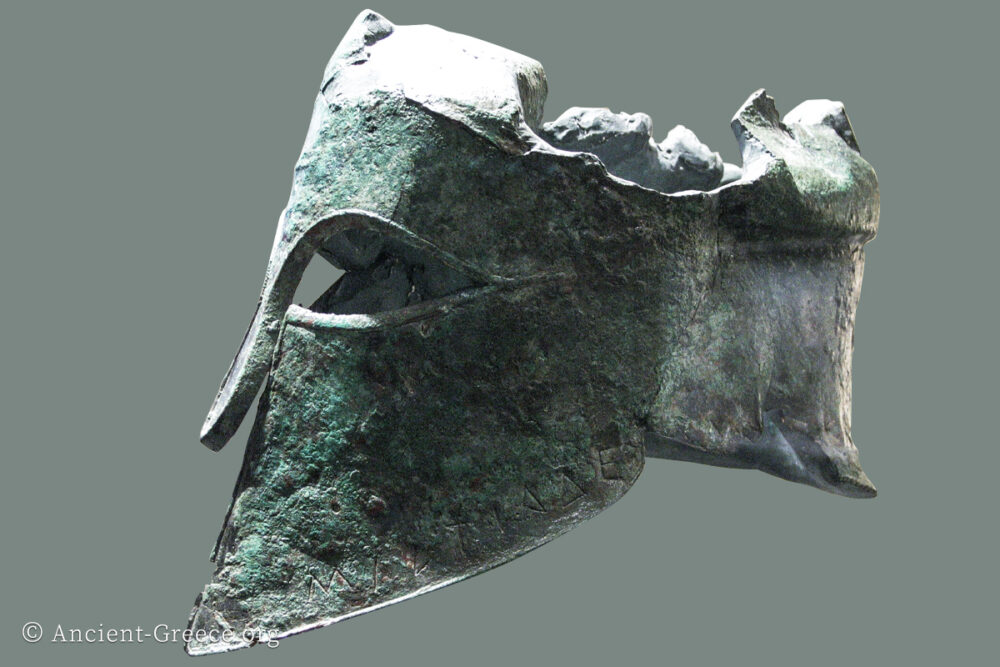
In 490 BCE, he landed his forces twenty miles north of Athens, at Marathon. While the Spartans were occupied with a religious festival, the outnumbered Athenians under the leadership of Miltiades mounted a surprise attack and routed the dumbfounded Persians at Marathon to preserve Greek independence for the time being.
It took ten years, but the Persian king Xerxes, determined to succeed where Darius failed, amassed what Herodotus described as the greatest army ever put together in order to attack Greece again. The Athenians, expecting a full attack from the Persians prepared for that moment as well. Under the leadership of Themistokles, they cashed the silver extracted from the newly dug mines of Lavrion and built a formidable navy of triremes.
Xerxes crossed the Hellespont in 480 BCE with his massive army and began annexing Greece through land and sea.
The first line of defense for the Greek alliance of city-states was at the narrow passage of Thermopylae where Leonidas with 300 Spartans and 700 Thespians held back the mighty Persian army for three days before they fell to a man through deceit. At the same time the Athenian ships fought the Persian navy to a stalemate at nearby Artemision before they withdrew to the straights of Salamis.
The Athenians vacated the entire non-combat population from their city, so when the Persians arrived they met no resistance. They took vengeance on the buildings and temples of Athens by burning them to the ground, and anchored their fleet at Faliron in pursuit of the Greek navy that was sheltered at nearby Salamis Island.
While the joint leadership of the Hellenes argued in typical Greek fashion if they should withdraw to the Peloponnese and where to engage the Pesians next, Themistokles, seeking an advantageous quick battle, invoked the Persian fleet into attacking as the Greek ships faked an early morning escape from Salamis.
As the Persians pursued what they thought was a fleeing foe, the Greek triremes turned and engaged the surprised Persians inflicting massive casualties and decimating the Persian navy. With his navy destroyed, Xerxes feared that the Greek triremes would rush to the Hellespont to cut off his only way home, so he withdrew back to Asia leaving his able general Mardonious to fight the Greeks.
Next year, in 479 BCE, the alliance of Greek states under the leadership of the Spartan general Pausanias put a permanent end to Persian ambitions to annex Greece with their victory at Plataea.
The victory of the Greek forces at Marathon, Salamis, and Plateaa are hailed as pivotal points in the development of western civilization. The reason being that, if the Persians were victorious all the achievements of Greece (and especially Athens) that followed immediately after–widely consider to be the foundation of western civilization–would not have transpired.
The Delian League
Following the successful defense of their homeland, the Greek states entered an era of high development. Athens especially emerged as a major superpower that led a host of other Greek city-states (some willing, some unwilling, and some reluctant) in a defensive alliance, the Delian League, against the Persians.
The tributes collected by the allies helped Athens expand and maintain a formidable, yet difficult, empire in the Aegean world. At the same time, Sparta led the Peloponnesian League, an alliance of states mostly from the Peloponnese that acted as a counter-balance against the perceived Athenian hegemony of Greece.
The Peloponnesian War
The competitive spirit, suspicion, and animosity toward each other that characterized all Greek cities re-emerged once the external danger of the Persians threat subsided, and with the two dominant powers occupying opposite ends of the political and cultural spectrum, it was not long before the underlying differences and mistrust spilled over in a particularly long and nasty conflict: the Peloponnesian War.
While Sparta and Athens were the primary adversaries, just about every other Greek city took part in the conflict at one time or another. With Sparta possessing the stronger land forces, and Athens dominating at sea with its navy of triremes, the war lasted for from 431 until 404 BCE with the Peace of Nicias interrupting it briefly in 421-418 BCE. After surviving a decimating plague in 430/9 BCE and a devastating defeat in Sicily by Syracuse in 413 BCE, Athens drained of resources finally capitulated to the Spartans in 404 BCE.
Cultural Apogee
The Classical Period produced remarkable cultural and scientific achievements. The city of Athens introduced the world to a direct democracy the likes of which had never been seen hitherto, or subsequently, with western governments like Great Britain, France, and USA emulating it two thousand years later.
The rational approach to exploring and explaining the world as reflected in Classical Art, Philosophy, and Literature became the well-grounded springboard that western culture used to leap forward, beginning with the subsequent Hellenistic Age and maturing through the pragmatism of Roman thought.
The thinkers of the Classical Greek era dominated political, scientific, and cultural discourse for thousands of year, remaining influential to our day.
The teachings of Socrates, Plato and Aristotle among others, either directly, in opposition, or mutation, have been used as reference point of countless western thinkers in the last two thousand years. Hippocrates became the “Father of modern medicine”, and the Hippocratic oath is still used today. The dramas of Sophocles, Aeschylus, Euripides, and the comedies of Aristophanes are considered among the masterpieces of western culture. Herodotus and Thucydides founded the discipline of “History” with their written accounts of the Persian and Peloponnesian wars.
The art of Classical Greece began the trend towards a more naturalistic (even in its early idealistic state) depiction of the world, thus reflecting a shift in philosophy from the abstract and supernatural to more immediate earthly concerns. Artists stopped merely “suggesting” the human form and began “describing” it with more accuracy.
Man became the focus, and “measure of all things” in daily life through democratic politics and cultural representations. Rational thinking and Logic became the driving force behind this cultural revolution at the expense of emotion and impulse.
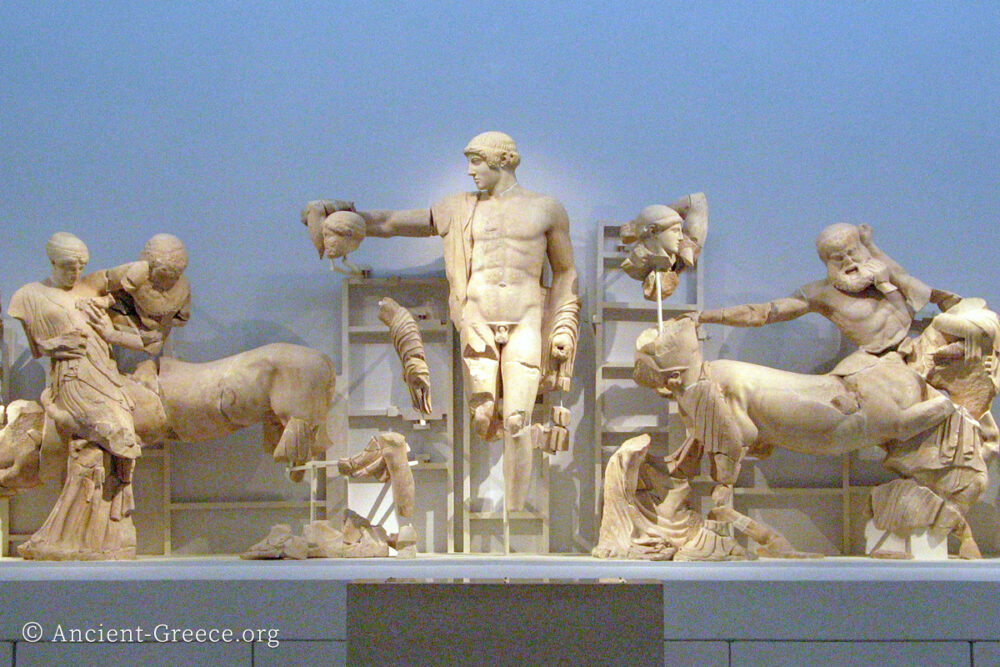
The most striking illustration of this “Logic over Emotion” approach is frozen on the faces of the statues of the temple of Zeus west pediment at Olympia. In the complex array of sculptures, it is easy to know who is a “barbarian” and who is a “civilized Hellene” simply by looking at the expression of their faces. Barbarian Centaurs exhibit an excess of emotion, while Lapithae women and Apollo remain collected and emotionless even in the direst of situations.
Macedonian Ascent
Even after its defeat at the Peloponnesian war, Athens remained a guiding light for the rest of Greece for a long time, but eventually this light that shone so bright, began to slowly fade.
Sparta won the Peloponnesian war and emerged as the dominant power in Greece, but her political prowess failed to match her military reputation.
Soon after the conflict ended, and while Sparta fought against other city-states all over Greece, Athens reconstructed her power after rebuilding the city walls, her navy and army. Sparta’s power and military might were eventually diminished, especially after two crashing defeats at the hands of the Thebans first in Leuctra in 371 BCE, and again nine years later at Mantinea. This power vacuum in Greece was quickly filled however by the Macedonians who under the leadership of Philip II emerged as the only major military authority of Greece after their victory at Chaeronea against the Athenians in 338 BCE.
Through diplomacy and might, Philip II who became king in 359 BCE, managed to consolidate the areas around northern Greece under his power, and until his assassination in 336 BCE had added central and southern Greece to his hegemony.
The pretext for his military expeditions to southern Greece was the protection of the Delphi Oracle from the Phoceans, but his sight was fixed beyond the borders of Greece. His ambition was to lead a military expedition of a united Greece against the Persian Empire to avenge the earlier Persian incursions of Greece. This ambition was fulfilled by his son Alexander the Great who became king after his father’s assassination.
Alexander the Great
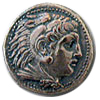
With a copy of the Iliad and a dagger in his hand, Alexander continued the centuries-old conflict between East and West by leading a united Greek army into Asia. His success on the battlefield and the amount of land he conquered became legendary and earned him the epithet “the Great”.
Besides brilliant military tactics, Alexander possessed leadership skills and charisma that made his army unbeatable in numerous battles against more numerous opponents, pushing the Greeks all the way to Egypt, India, and Bactria (today Afghanistan). Alexander led his army in battle always placing his own self at the point of attack, partaking in the common soldier’s jeopardy, and thus won a series of major battles that obliterated all opposition in its path. In the process he amassed the largest empire hitherto known and altered the composition of the ancient world.
In 334 BCE, Alexander led his army across the Hellespond into Asia and scored successive wins against the Persian Empire. His first success came at Granicus River in northwest Asia Minor where his Calvary routed the outnumbered Persian mercenaries who fought under the leadership of Memnon of Rhodes.
In 333 BCE Alexander’s outnumbered army defeated the Persians at Issus and forced king Darius to flee for his life. The subsequent conquest of Miletus, Tyre (332 BCE), and Egypt (331 BCE) gave the Greeks control of the entire eastern shore of the Mediterranean, and allowed Alexander to move inland towards the heart of the Persian Empire.
In Egypt Alexander was proclaimed to be the son of god Ammon (the equivalent of the Greek Zeus), and he proclaimed himself King of Asia after his victory at the battle at Gaugamela in 331 BCE, which sealed the fate of the Persian Empire.
From Babylon, Alexander led his army towards the heart of south Asia, subduing all resistance and establishing cities along the way. Despite the objections of his officers, he incorporated into his army forces from the conquered lands, adopted local customs, and married a Bactrian woman, Roxane.
His march eastward eventually stopped on the edge of India partly due to the objections of his fatigued army. He returned from the frontier to Babylon to plan his next expedition southward, towards Arabia, but in 323 BCE his sudden death of a fever at the age of 32 put an end to a brilliant military career, and left his vast conquered land without an apparent heir.
The conquests of Alexander the Great changed the course of Ancient history. The center of gravity of the Greek world moved from the self-containment of city-states to a vast territory that spanned the entire coast of Eastern Mediterranean and reached far into Asia. Alexander’s conquests placed a plethora of diverse cultures under common hegemony and Greek cultural influence around the Mediterranean and southern Asia, paving the way for the distinct Hellenistic civilization that followed his death.
Chapters
This history of Ancient Greece is divided into the following chapters:
- Timeline
- Introduction
- Overview
- Geography
- Stone Age
- Bronze Age
- Dark Ages
- Archaic Era
- Classical Era
- Hellenistic Era
Related Pages





